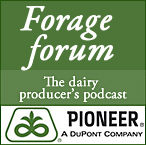 North American cheese and butter makers are invited to showcase their all-Jersey milk products in the first North American Jersey Cheese Awards, July 2 in Syracuse, N.Y. The competition is being held during the joint meetings of the World Jersey Cattle Bureau, the American Jersey Cattle Association and National All-Jersey Inc. Awards will be announced July 3 during the “Jersey Worlds Combine” festivities at Sycamore Hill Gardens, Marcellus, N.Y.
North American cheese and butter makers are invited to showcase their all-Jersey milk products in the first North American Jersey Cheese Awards, July 2 in Syracuse, N.Y. The competition is being held during the joint meetings of the World Jersey Cattle Bureau, the American Jersey Cattle Association and National All-Jersey Inc. Awards will be announced July 3 during the “Jersey Worlds Combine” festivities at Sycamore Hill Gardens, Marcellus, N.Y.
There is no fee to enter the contest, or a limit on the number of varieties that a cheese maker can enter. Entries will be accepted through Monday, June 15, and products must be received at the contest location on or before July 1.
The contest is modeled after the highly successful World Jersey Cheese Awards, the first breed-specific cheese competition held last May in Jersey during the International Conference of the World Jersey Cattle Bureau. Judges will provide an objective assessment of all entries, which must be made from exclusively Jersey cow milk. Gold, Silver and Bronze awards will be given in 17 classes for cheeses, and a single class for Jersey cream butters.
Gold Award cheeses from each class will then go forward for the best in show class. A trophy plate designed by the artisans at Jersey Pottery, the world-renowned ceramics house, will be presented to the maker of North America’s Best Jersey Cheese.
Members of the judging panel will include:
Charles Lindberg, a Supervising Dairy Products Specialist with the New York State Department of Agriculture and Markets who has worked with cheese and other dairy products for 27 years. In addition to dairy product inspection and safety assurance duties, he is chief judge of the New York State Fair Dairy Products Competition. He has also served as a judge at several past United States and World Championship Cheese Contests.
Eric Dutton, who worked for the New York State Department of Agriculture and Markets Division of Milk Control as a Dairy Products Specialist for 35 years. He retired as a Regional Supervisor. Along with his regulatory work, Dutton was a New York state cheese grader and one of the founders of the New York State Fair Dairy Products Contest. He also served as a grader and grading instructor for various Department cheese quality improvement programs over the years.
Debbie Groom, agribusiness and farming writer for The Post-Standard, Syracuse, N.Y.
Classes
1. Fresh and cream cheese, plain
2. Mold ripened soft or unpressed cheese, plain
3. Soft or unpressed cheese, ripened, plain
4. Blue vein cheese, any variety, uncut
5. Continental style hard cheese, style to be indicated
6. British style hard cheese, style to be indicated
7. Continental style semi-hard cheese, style to be indicated
8. British style semi-hard cheese, style to be indicated
9. Very hard cheese
10. Rind washed cheese
11. Smoked cheese
12. Flavoured cheese, sweet
13. Flavoured cheese, savoury
14. Reduced fat cheese, fat percentage reduction to be indicated
15. Hard cheese produced on farm/dairy with a total output not exceeding a weekly average of two metric tons (4,400 pounds), i.e., farmstead produced
16. Semi-hard cheese, farmstead produced
17. Soft cheese, farmstead produced
18. Jersey cream butter, any style
For more information on the Awards competition and festival and to submit entries, contact Dr. Cherie L. Bayer, North American Vice-President for the World Jersey Cattle Bureau, at (614) 861-3636; Russell Gammon, Executive Secretary of Jersey Canada, at (519) 821-1020; or contest superintendent Sarah Mullen, Customer Service Coordinator with National All-Jersey Inc., at (614) 266-6916 or email smullen@usjersey.com.

 The board of the
The board of the  Dairy Markets Week in Review
Dairy Markets Week in Review
 Growing conditions can vary from year to year and this variance can impact the nutritional value of the
Growing conditions can vary from year to year and this variance can impact the nutritional value of the  The
The  A Purdue University study
A Purdue University study  Willie Nelson and his
Willie Nelson and his